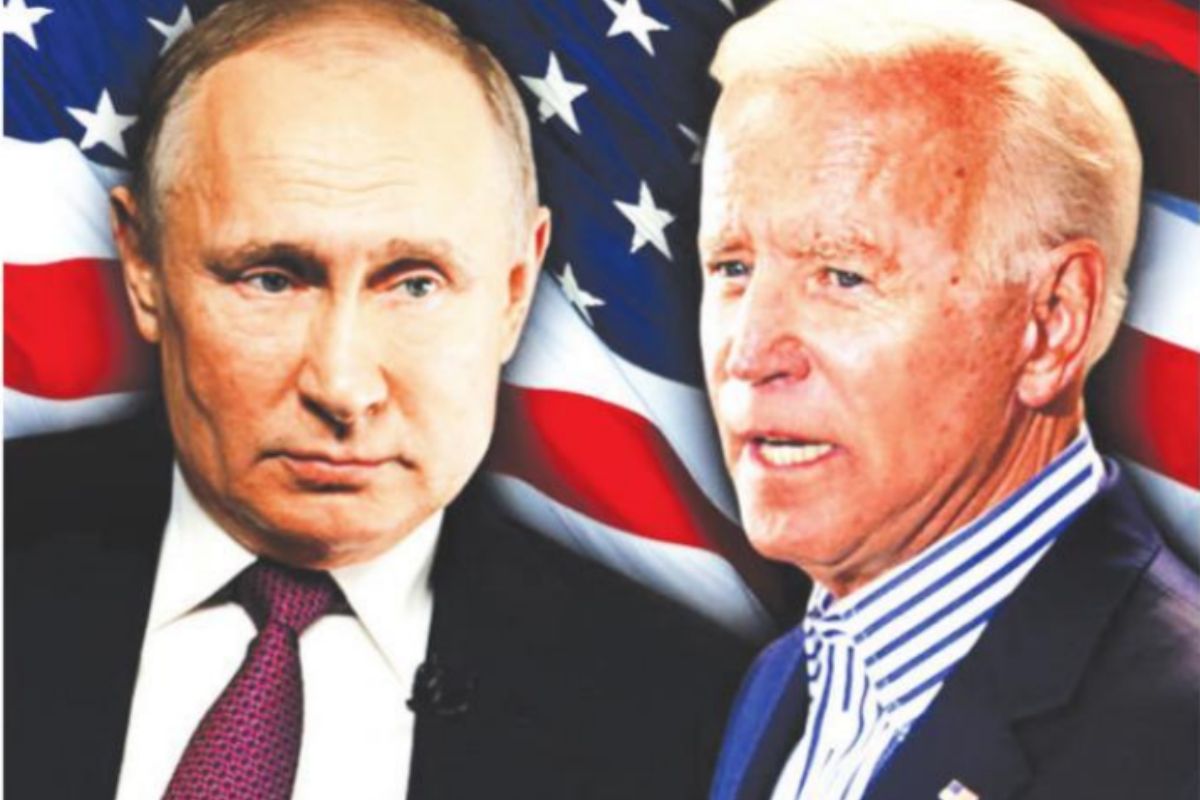Rome to host new round of US-Iran nuclear talks, says Italian FM
A new round of talks between the United States and Iran on Tehran's nuclear programme will be held in Rome, Italian Foreign Minister Antonio Tajani said on Monday.
Once US spy planes brought back evidence of Soviet missiles on Cuban soil, it was inevitable that the Kennedy White House would issue an ultimatum to the Kremlin: ship out of Cuba or face an attack.
ANN/DAWN | October 20, 2022 4:53 pm

SNS
Observers of the current tensions between Moscow and Washington, amid veiled threats of nuclear warfare and warnings of massive retaliation, are divided over whether the present predicament is less dire or a bigger danger than the ‘eyeball-to-eyeball’ confrontation between the US and the USSR 60 years ago this month. It’s a tricky dilemma. The global situation is very different in any number of ways, as are the particulars. The Soviet Union did not invade any country in 1962. It shipped troops, missiles and nuclear warheads to a recent ally that had just the previous year staved off a CIAorganised invasion. It may not have been a wise step, but nor was it illegitimate — even though this particular ally happened to lie just 90 miles (145 kilometres) south of Florida. Until then, there had been plenty of US/Nato missile launchers sited uncomfortably close to Soviet borders, but no reciprocal deployments that would be seen as a challenge to American exceptionalism.
Once US spy planes brought back evidence of Soviet missiles on Cuban soil, it was inevitable that the Kennedy White House would issue an ultimatum to the Kremlin: ship out of Cuba or face an attack. It’s worth remembering that the other side showed no intent of initiating military action, not even after the US imposed a blockade around the island and took other actions incompatible with international law in peacetime. However, military conflict that may well have spiralled into nuclear war was avoided essentially because both Nikita Khrushchev and John F. Kennedy were aware of the inevitable consequences, and neither of them was willing to contemplate wiping out one-sixth of humanity.
Advertisement
As Daniel Ellsberg recalls in his fascinating (and frightening) 2017 book The Doomsday Machine, as a young adviser/consultant he was privy to certain top secret information, including Pentagon calculations in 1961 about the potential loss of life from a US nuclear attack on the USSR. Including ‘collateral damage’ from fallout in neighbouring European and Asian countries, it added up to half a billion in the first six months. The global population then was less than 3.2bn, and the figures ignored the likelihood of retaliatory strikes and their possible toll. Kennedy had been advised early on by his UN ambassador Adlai Stevenson to offer Khrushchev an off-ramp by promising to withdraw Nato missiles from Italy and Turkey, and to return Guantanamo Bay to Cuba, in return for a Soviet military withdrawal from the Caribbean revolutionary isle.
Advertisement
Ruling out a further US attempt to invade Cuba was an even more obvious concession. Certain other civilian aides offered similar advice, but the military was keen to demonstrate its prowess. Fortunately for humanity, Kennedy eventually adopted part of the Stevenson strategy, ruling out an invasion and vowing to withdraw the Jupiter missiles from Turkey’s border with the USSR in exchange for a Soviet nuclear pullout from Cuba. Khrushchev agreed, even though the US wanted the Turkish part of the deal to remain secret — as it did for many years. It wasn’t widely known for even longer precisely how close the two superpowers came in late October 1962 to sparking a nuclear conflict. On at least a couple of occasions, a small miscalculation could have caused an explosion that would have resounded across the globe.
Back-channel contacts were key to avoiding Armageddon, and by the following year, a Moscow-Washington hotline and related measures had been put into place. That didn’t prevent future instances of electronic or human error that came close to initiating an irreversible descent into mutually assured annihilation, but catastrophe was fortuitously avoided. The risk, as estimated by the Doomsday Clock, has fluctuated over the decades. It kicked off in 1947 at seven minutes to midnight, and was back at that figure in 1962 after shifting forward in the 1950s. For the past couple of years, it has stood at 100 seconds to midnight. Joe Biden’s warning earlier this month of imminent Armageddon was walked back by both the White House and Pentagon, amid reassurances that it wasn’t based on any fresh intelligence.
Would Vladimir Putin, in the face of continuing conventional military setbacks, use even ‘small-yield’ nuclear bombs in the battlefields he has created in Ukraine? If he were dumb and desperate enough to do so, the consequences beyond the obvious crimes against humanity would be unfathomable. Unlike Khrushchev, Putin considers himself unanswerable to anything resembling a presidium or a politburo. One can only hope that there are back cha-n–nels in place between the US and Russia, but Putin would do well to heed what Khru-sh-chev noted long after he had been overthrown by his colleagues (months after Kennedy’s assassination): “What good would it have done me in the last hour of my life to know that though our great nation and the United States were in complete ruins, the national honour of the Soviet Union was intact?”
Advertisement
A new round of talks between the United States and Iran on Tehran's nuclear programme will be held in Rome, Italian Foreign Minister Antonio Tajani said on Monday.
A group of US lawmakers told South Korea's top diplomat Monday that America will not withdraw from the Indo-Pacific region as they reaffirmed their commitment to the bilateral alliance, Seoul's Foreign Ministry said.
There is an unconfirmed report that the US has redeployed at the Bagram air base in Afghanistan. This base was the command centre for NATO and US forces throughout their occupation of Afghanistan.
Advertisement
